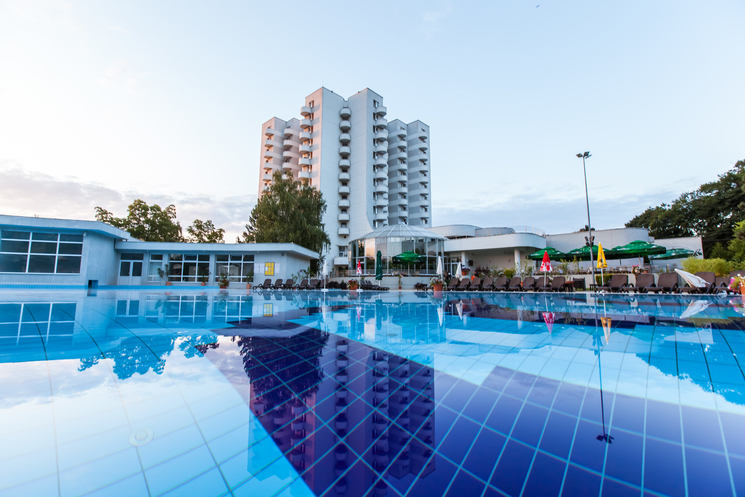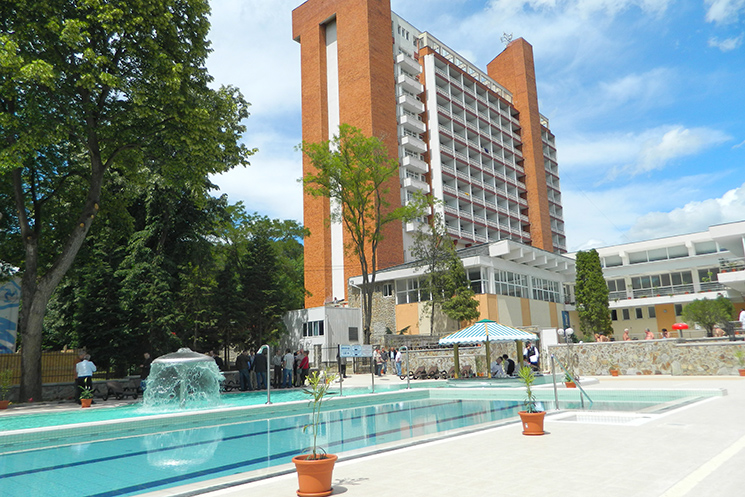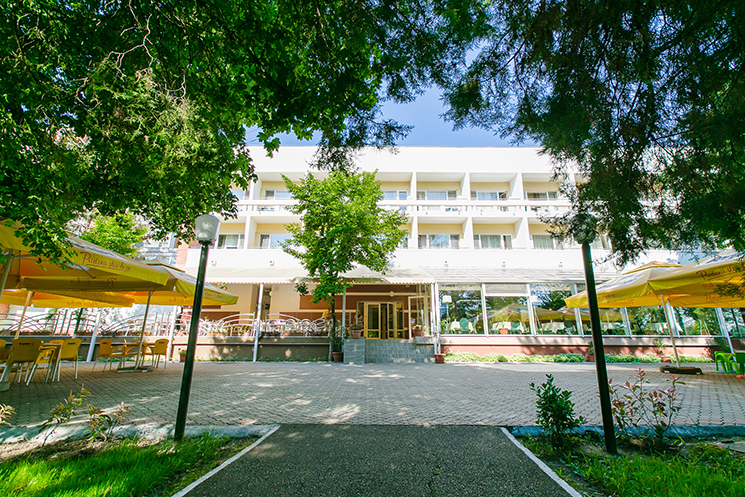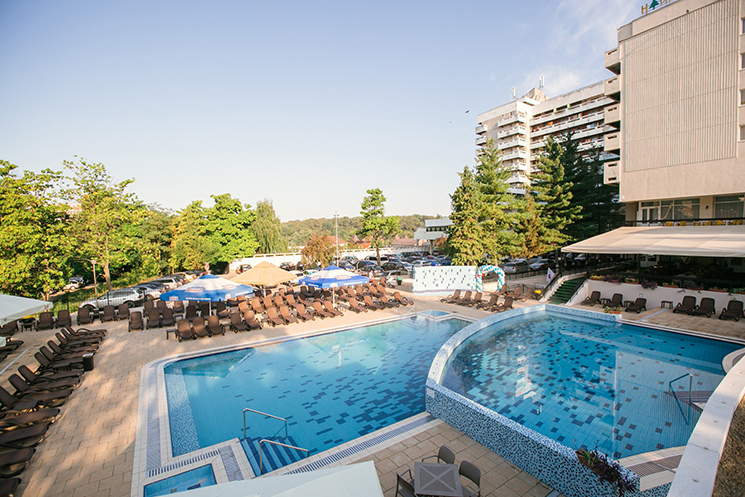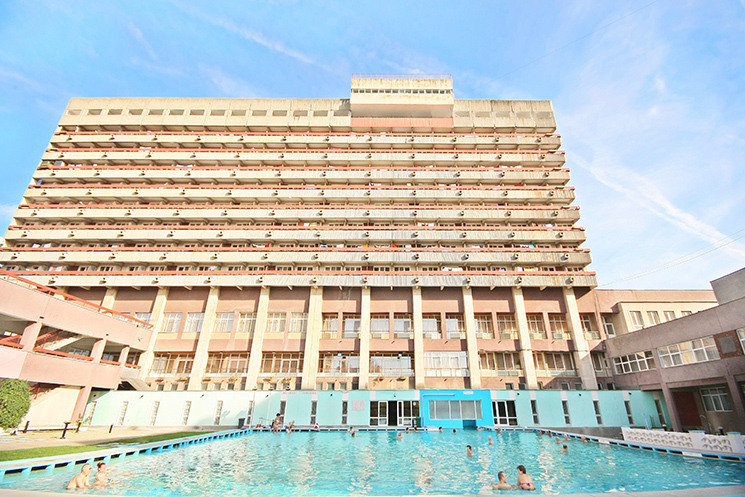Băile Felix
The Lotus Lake
Here, in a unique microclimate in Europe due to the thermal springs, rare species grow, such as the White Water Lily (Nymphaea Alba), Sacred Lotus (Nelumbo Nucifera), Thermal Water Lily (Nymphaea lotus var. Thermalis), and the Swamp Cypress (Taxodium distichum).
The White Water Lily (Nymphaea Alba) is a perennial herbaceous plant, protected by law, from the Nymphaeaceae family, found across Europe (including Romania), the Caucasus, Siberia, and Central Asia. In Romania, it is a rare species. The White Water Lily, the most well-known species, prefers relatively shallow waters, about 30-150 centimeters deep. Its green leaves have a characteristic circular shape and can reach a diameter of 30 centimeters. Water lilies are the flowers with the most meanings in mythology, symbolizing: creative force, immortality, health, glory, or inner peace. Their blooming begins in the first decade of June.
The Sacred Lotus (Nelumbo Nucifera) is also a type of water lily, with similar flowers, but it differs in the shape of its leaves. The Sacred Lotus rises above the water, while the water lily floats on it. The stems are long, contain air, and manage to break through the water level to unfold their leaves at the surface, which are curled like papyrus scrolls. The leaves are green, circular, and can have a diameter of up to 60 cm. The flowers, with a diameter of up to 20-25 cm, rise a few centimeters above the water, are fragrant, and are either pink or white. They open in the morning and close in the evening, falling off after about five days. In addition to the property of always staying clean, researchers in biology have recently discovered that the lotus regulates the temperature of its flowers, maintaining it between 30°C - 35°C (86°F - 95°F) when the surrounding temperature drops to 10°C (50°F). Another remarkable trait of the lotus is the longevity of its seeds and their ability to germinate after long periods of time. It seems that lotus seeds found in a dried lake in China were germinated, and were dated to be several hundred years old. The pink lotus is the most famous and treasured flower of all, being associated with Buddha. The blooming period occurs between April and October.
The thermal water lily (Nymphaea lotus var. Thermalis) is a species of water lily that only lives in the area of the 1 Mai Baths. It is believed that this species is likely a tertiary relic. The species was discovered in 1789 by botanist P. Kitaibel, and its name was given a bit later, in 1908, when J. Tuzson named it because it resembles the Nile water lily. Due to its uniqueness (the Pețea Lake site is the only place where this species is found), Nymphaea lotus var. Thermalis was declared a natural monument as early as 1931, following the efforts of Professor Alexandru Borza. The decrease in the water level of Pețea Lake prompted actions to save the thermal water lily, which were completed in 2015 with the relocation of the first plants to the "Lacul cu Nuferi" Natural Reserve in Băile Felix. They adapted to the new environment, and there are plans to populate an entire basin exclusively with this beautiful natural monument. The thermal water lily appears on the water surface from April until the end of October. Its flowers open their white-yellowish petals at dusk, and in the morning, between 10 AM and 12 PM, when the water temperature reaches up to 34°C, the flowers close in anticipation of the evening.
The Bald Cypress (Taxodium distichum) is an exotic species that can reach up to 50 meters in height and up to 4 meters in diameter. It is native to the southeastern United States, where it has a fairly limited range near the Gulf of Mexico. In Romania, it is cultivated in parks and botanical gardens (Cluj, Timișoara, Simeria, Bucharest, etc.). It is adapted to oceanic, warm, and humid climates but can also withstand colder and drier climates in Europe. It does not tolerate severe frost and prolonged droughts, and it has a great ability to adapt to soil conditions (pneumatophores in swamps). It is the longest-living tree species and can reach up to 6000 years. It flowers in April.
Apollo-Felix Swimming pool
Fun, relaxation, and adventure 365 days a year, all in one place! It is the most modern thermal aquatic complex in western Romania, open throughout the year, fully renovated, and featuring 10 pools that delight tourists from all over. Among these are a 1000 sqm thermal water pool with hydro-massage systems, underwater massage beds, games, and waterfalls; two relaxation pools with a total area of 1,700 sqm for adults; a 330 sqm swimming pool equipped with a wave-making system; and two special children’s pools, “Baby” and “Junior,” covering 500 sqm with water games. The complex also has dining units, self-service, a bar, a confectionery, a bakery, shops, a sports field, massage services, pedicure, a playground for children, medical assistance, and entertainment programs for both adults and children, including activities like Aquagym, Aquazumba, Nordic Walking, Vacation Games, and children’s activities. It operates year-round with the following schedule: Monday 8:00 AM - 7:00 PM, Tuesday to Friday 8:00 AM - 8:00 PM, and Saturday 7:00 AM - 8:00 PM.
Wooden Orthodox Church
This church was built in 1785 from oak wood cut from the imperial forest.
Oradea
Judeţul Bihor
Bear Cave (Peștera Urșilor) - The cave interior is notable for its diverse stalactite and stalagmite formations, as well as the impressive number of traces and fossils of the cave bear (Ursus spelaeus), which became extinct 15,000 years ago. Location: 70 km on DN76
Padiș - Located at an average altitude of 1,200 meters, Padiș is a plateau crossed by an extensive hydrographic network and features a landscape of sinkholes (doline), rocky cliffs, caves, abysses, hills, gorges, and clearings. Location: 116 km on DN76

